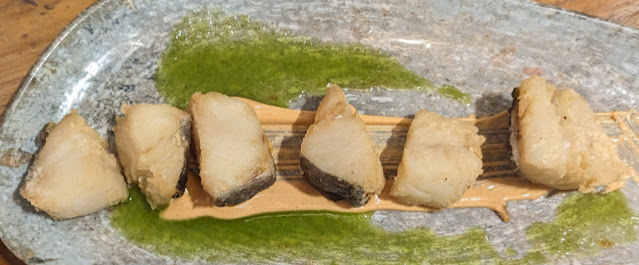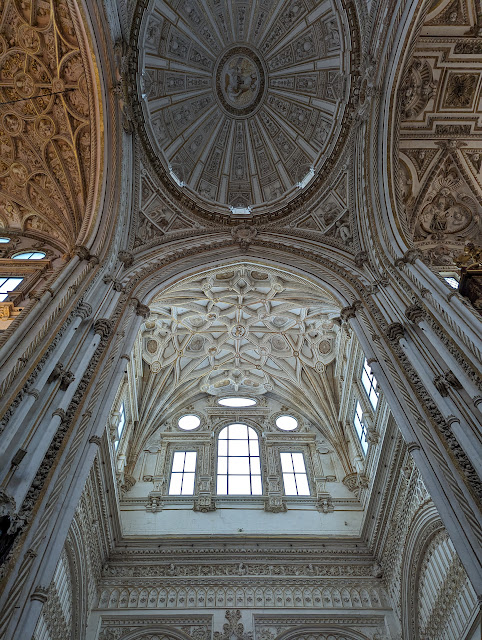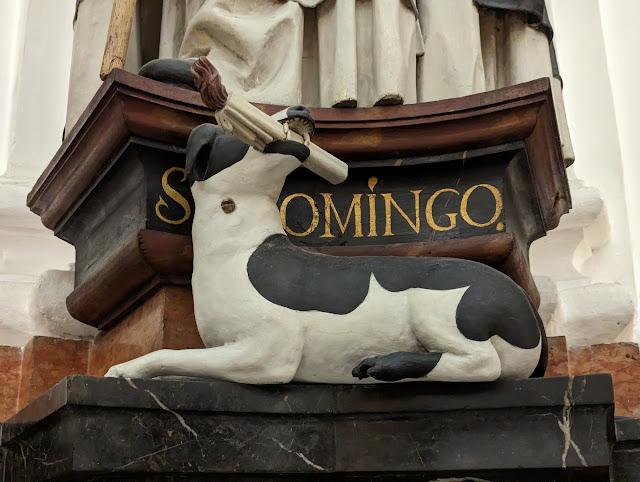From Wikipedia:
"In 1236 Córdoba was conquered by King Ferdinand III of Castile as part of the Reconquista. Upon the city's conquest, the mosque was converted into a Catholic cathedral dedicated to the Virgin Mary. The first mass was dedicated here on June 29 of that year. According to Jiménez de Rada, Ferdinand III also carried out the symbolic act of returning the former cathedral bells of Santiago de Compostela that were looted by Al-Mansur (and which had been turned into mosque lamps) back to Santiago de Compostela.
"Despite the conversion, the early Christian history of the building saw only minor alterations being done to its structure, mostly limited to the creation of small chapels and the addition of new Christian tombs and furnishings.
"The cathedral's first altar was installed in 1236 under the large ribbed dome at the edge of the10th-century extension of the mosque, becoming part of the cathedral's first main chapel. There is no indication that even this space was significantly modified in its structure at this time. The area of the mosque's mihrab and maqsura, along the south wall, was converted into the Chapel of San Pedro and was reportedly where the host was stored. What is today the 17th-century Chapel of the Conception, located on the west wall near the courtyard, was initially the baptistery in the 13th century. These three areas appear to have been the most important focal points of Christian activity in the early cathedral. The minaret of the mosque was also converted directly into a bell tower for the cathedral, with only cosmetic alterations such as the placement of a cross at its summit.
"Notably, during the early period of the cathedral-mosque, the workers charged with maintaining the building (which had suffered from disrepair in previous years) were local Muslims (Mudéjars). Some of them were kept on payroll by the church but many of them worked as part of their fulfilment of a "labor tax" on Muslim craftsmen (later extended to Muslims of all professions) which required them to work two days a year on the cathedral building. This tax was imposed by the crown and was unique to the city of Cordoba. It was probably instituted not only to make use of Mudéjar expertise but also to make up for the cathedral chapter's relative poverty, especially vis-à-vis the monumental task of repairing and maintaining such a large building. At the time, Mudéjar craftsmen and carpenters were especially valued across the region.
"Other chapels were progressively created around the interior periphery of the building over the following centuries, many of them funerary chapels built through private patronage.
"The most significant alteration of all, however, was the building of a Renaissance cathedral nave and transept – forming a new Capilla Mayor [es] – in the middle of the expansive mosque structure, starting in 1523. The project, was vigorously opposed by the city council of Cordoba. The cathedral chapter eventually won its case by petitioning Charles V, king of Castile and Aragon, who gave his permission for the project to proceed. When Charles V later saw the result of the construction he is reputed to have been displeased, however, and is claimed to have commented: "You have built what you or anyone else might have built anywhere; to do so you have destroyed something that was unique in the world."
"After all of its historical expansions, the mosque-cathedral covers an area of 590 by 425 feet (180 m × 130 m). The building's original floor plan follows the overall form of some of the earliest mosques built. Some of its features had precedents in the Umayyad Mosque of Damascus, which was an important model built before it. It has thick outer walls with a somewhat fortress-like appearance. The Christian-era additions (after 1236) included many small chapels throughout the building and various relatively cosmetic changes. The most substantial and visible additions are the cruciform nave and transept of the Capilla Mayor, which were begun in the 16th century and inserted into the middle of the former mosque's prayer hall, as well as the remodelling of the former minaret into a Renaissance-style bell tower."
So on to the cathedral photos:
so I highly recommend a visit here when in Spain. For good or bad - it is unique in the world. Next back to eating and drinking in Sevilla before Larry leaves for Lisbon.





































































